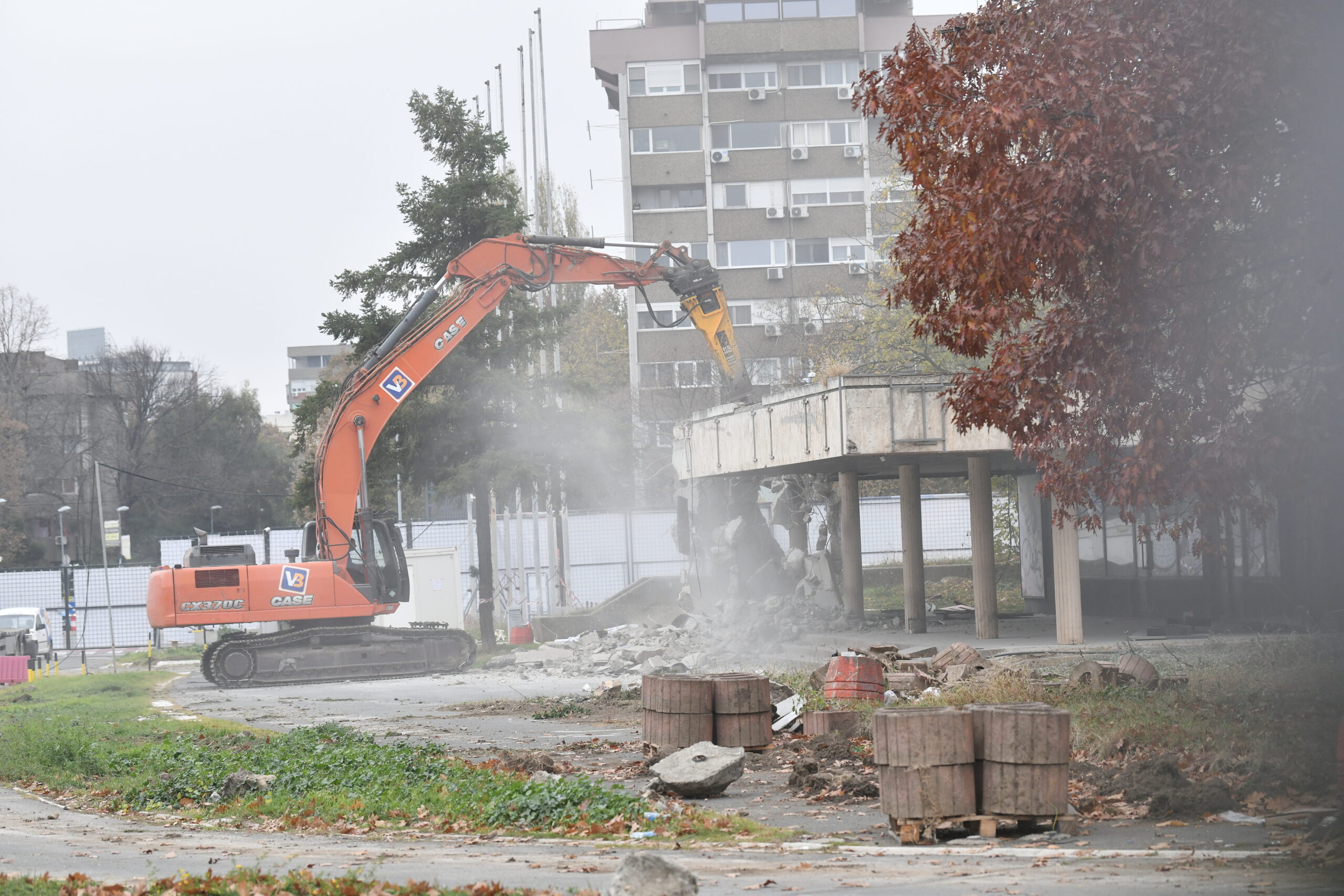The demolition of
Hotel Jugoslavija in Belgrade without proper safety measures for handling asbestos is a serious public health concern. Asbestos is known to release harmful fibers into the air when disturbed, and exposure to these fibers can cause severe health problems, including
asbestosis,
lung cancer, and
mesothelioma.
How Many People Could Be Affected?
The number of people affected depends on several factors:
- Demolition Workers:
- Workers involved in the demolition are at the highest risk, especially if they are not using protective gear. Even short-term exposure can be dangerous.
- Nearby Residents:
- Hotel Jugoslavija is located near residential areas and the Danube River promenade. If asbestos fibers are released into the air, they could easily spread to the surrounding neighborhoods, putting thousands of residents at risk.
- Passersby and Commuters:
- People walking or driving near the site can inhale airborne asbestos fibers. The risk is higher if demolition activities produce visible dust clouds.
- Tourists:
- Since this is a notable location in Belgrade, tourists could also be exposed, especially if they are unaware of the ongoing demolition.
- Secondary Exposure:
- Family members of workers can be affected indirectly if asbestos fibers are brought home on clothes, shoes, or equipment.
Potential Impact Scale
- Immediate vicinity (within a few hundred meters): Potentially hundreds to thousands of people, including workers and nearby residents.
- Broader area: Depending on weather conditions (e.g., wind direction), asbestos fibers could travel further, possibly affecting several thousand more individuals.
Long-Term Risks
- Asbestos-related diseases have a long latency period, often taking 10-40 years to develop after exposure. Therefore, the full impact might not be immediately visible but could manifest years later.
What Should Be Done?
Given the potential health hazards:
- Immediate halt to demolition until proper asbestos removal protocols are implemented.
- Public health authorities should conduct an air quality assessment.
- Surrounding residents should be informed and possibly evacuated if the contamination level is high.
- Provide medical screenings for workers and nearby residents to assess early signs of asbestos exposure.
If this situation isn't managed properly, it could lead to a significant public health crisis in the coming years.
---
---
The exact amount of asbestos contained in
Hotel Jugoslavija isn't publicly documented, at least not in readily available sources. However, there are a few key factors that can help estimate the potential scale of asbestos contamination:
1. Historical Context
- Hotel Jugoslavija, built in the 1960s, is one of the largest buildings in Belgrade. At that time, asbestos was commonly used in construction materials due to its fire-resistant and insulating properties.
- Buildings from that era often contained asbestos in various forms, such as:
- Insulation: Used in pipes, boilers, and ductwork.
- Flooring: Vinyl tiles, adhesives, and backing materials.
- Roofing and Wall Panels: Asbestos cement sheets, shingles, and siding.
- Fireproofing Materials: Sprayed coatings on steel beams and columns.
- Soundproofing and Ceiling Tiles.
2. Potential Quantity
- Given the hotel's massive size (approximately 80,000 square meters of space), the total asbestos content could be significant if multiple parts of the building incorporated asbestos-based materials.
- Older large-scale buildings can contain tons of asbestos materials, especially if asbestos was used extensively for insulation, soundproofing, or fireproofing.
3. Comparative Examples
- Similar buildings from that era in Europe have been found to contain anywhere from 20 to 100 tons of asbestos, depending on the extent of its use.
- For example, large public buildings or hotels constructed in the mid-20th century might contain several tons of asbestos cement sheets, insulation materials, and other products.
4. Why It Matters
- Even a small quantity of disturbed asbestos can release millions of fibers into the air. This poses a significant health risk if the hotel is being demolished without proper asbestos abatement procedures.
- If no containment measures are taken, asbestos fibers can spread through the air, affecting not just workers but also residents, passersby, and anyone in the vicinity.
Conclusion
Without specific data on the exact materials used in
Hotel Jugoslavija, it's challenging to provide an accurate figure. However, considering the building's size, age, and construction period, it's plausible that it contains
tens of tons of asbestos-containing materials. The potential health impact could be severe if demolition proceeds without proper safety measures.
A thorough
asbestos survey and proper abatement procedures are crucial to prevent widespread contamination and protect public health.


